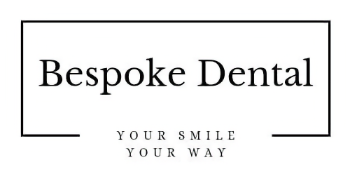Comparing Local Oral Surgeons: What You Need to Know About Wisdom Teeth Extraction Costs

Wisdom teeth extraction is a common oral surgery procedure to remove third molars that can cause pain, infection, or alignment issues. Costs vary widely because procedure complexity, anesthesia choices, imaging needs, and regional market differences all change billed amounts, so comparing local oral surgeons helps patients estimate out-of-pocket responsibility. This article explains 2025 cost ranges for single-tooth and full-mouth removal, contrasts impacted versus erupted cases, and breaks down typical add-on fees such as imaging, anesthesia, and follow-up care. You will also get a step-by-step checklist for comparing itemized quotes, guidance on how impaction type and anesthesia affect price, and a clear comparison of insurance and financing options including PPO/HMO differences, CareCredit-style financing, and FSA/HSA use. Practical lists, three EAV tables for quick reference, and actionable questions to ask practices will make it easier to make informed choices when evaluating local oral surgeons for wisdom teeth extraction.
How Much Does Wisdom Teeth Removal Cost in 2025?
How much you will pay in 2025 depends on whether the tooth is erupted or impacted and whether multiple teeth are removed in one visit, with per-tooth and full-mouth ranges reflecting that complexity. Simple extractions (erupted wisdom teeth) generally fall toward the lower end of the range because they require less surgical time and no bone removal, while surgical extraction for impacted teeth requires more time, specialized instrumentation, and sometimes a facility fee. Understanding these baseline ranges helps set expectations before you get an itemized estimate from an oral and maxillofacial surgeon. The table below summarizes typical 2025 estimated ranges per tooth and for all four wisdom teeth to provide a quick benchmark.
Procedure TypeTypical Cost Per Tooth (2025)Typical Cost for All Four (2025)Erupted (simple extraction)$150–$350$600–$1,400Impacted (surgical; soft tissue)$250–$850$1,000–$3,400Impacted (partial bony)$300–$950$1,200–$3,800
This quick-reference table frames expected price bands and highlights why impacted cases push total cost higher due to added surgical steps, instrumentation, and operative time.
What Are the Average Costs for Impacted vs. Erupted Wisdom Teeth?
An erupted wisdom tooth usually requires a simple extraction with minimal surgical intervention, which reduces operative time and often eliminates the need for complex imaging or general anesthesia. Impacted teeth are categorized by soft tissue, partial bony, or fully bony impaction, and each step up in impaction complexity typically adds to surgical time and the likelihood of specialist-level intervention by an oral and maxillofacial surgeon. As a practical example, a single erupted tooth might cost a few hundred dollars, whereas a single fully bony impacted tooth can cost several hundred to near a thousand dollars depending on location and anesthesia choices. When comparing estimates, always confirm whether the quoted per-tooth price assumes multiple extractions in one session or separate visits, because bundled pricing for all four teeth can change the per-tooth math.
The prevalence of impacted wisdom teeth is a significant factor in determining the complexity and cost of their removal.
Prevalence and Risk Factors of Impacted Wisdom Teeth
The prevalence of impacted wisdom teeth is affected by race, region, and local factors such as oral function. It is generally agreed that more than half of the global population exhibits one or more wisdom tooth abnormalities, which include bone-impacted wisdom teeth. When present, wisdom teeth in the lower jaw are at a greater risk of one of the many kinds of impaction than the upper jaw.
Impacted Wisdom Teeth and the Benefits of Removal
Which Additional Fees Affect the Total Wisdom Teeth Extraction Cost?
Several ancillary fees commonly appear on an itemized estimate and can change the final out-of-pocket total even when surgeon fees are similar between providers. Typical add-ons include consultation fees, imaging (panoramic X-ray or CBCT), anesthesia or sedation fees (if IV or general anesthesia is used), facility or operating room fees for ambulatory surgery centers, prescribed postoperative medications, and follow-up or emergency visit charges. These components are separate parts of the overall billing ecosystem: imaging and anesthesia are meronyms of the procedure and can each add hundreds of dollars if advanced services are required. When you receive an estimate, ask the practice to separate each of these line items so you can compare apples-to-apples between local oral surgeons.
- Common additional fees to watch for: Consultation and exam feeX-ray or CBCT imaging feeAnesthesia or sedation feeFacility or operating room fee
- Key insight: An itemized estimate that lists these fees allows direct comparison and reduces unexpected out-of-pocket costs.
What Factors Influence the Cost of Wisdom Teeth Extraction?
Several primary factors influence pricing: the degree of impaction, the chosen anesthesia type, the surgeon’s experience and credentials, and regional cost-of-living and market competition. Impaction complexity directly increases surgical time and technique requirements, which raises surgeon and facility fees; this relationship can be described as Impaction type → increases → surgical complexity. Anesthesia depth requires additional monitoring and personnel, which increases facility and anesthesia charges, so the anesthesia choice is a strong cost driver. Finally, geographic factors such as urban centers with higher overhead and demand typically push average fees higher than rural markets, which is why local benchmarking is important when you compare quotes.
Cost FactorHow It Affects PriceExample ImpactImpaction complexityMore complex impactions need longer surgery10–50% higher vs simple extractionAnesthesia typeDeeper sedation requires monitoring and personnel$100–$1,000+ depending on typeImaging & diagnosticsCBCT adds accuracy but costs more than pano X-ray$100–$400 extraSurgeon experience & facilitySpecialist fees and facility overhead raise base ratesVaries by market
How Does the Type of Impaction Affect Pricing?
Impaction types—soft tissue, partial bony, and full bony—correlate with increasing surgical complexity and time in the operatory, which in turn increases cost. Soft tissue impactions often require a small incision and minimal bone manipulation, while partial or full bony impactions involve bone removal, sectioning of the tooth, and extended closure time. As a result, price uplifts typically reflect the additional technique and time: partial bony cases generally cost more than soft tissue cases, and fully bony impactions command the highest procedural fees. When discussing estimates, ask the surgeon to describe the anticipated impaction classification and how that estimate would change if intraoperative findings require more extensive work.
What Role Does Anesthesia Type Play in Cost Variation?
Anesthesia options range from local anesthesia through nitrous oxide and IV sedation to general anesthesia, and costs rise with sedation depth due to personnel, monitoring equipment, and facility requirements. Local anesthesia is the least expensive option and is common for simple extractions; nitrous oxide adds modest cost and relaxation benefits; IV sedation and general anesthesia require an anesthesia provider and monitoring, which can add several hundred to over a thousand dollars. Choose deeper sedation when clinical indications—such as anxiety, complex impaction, or multiple simultaneous extractions—make it safer or more comfortable, but confirm whether the estimate includes the anesthesia provider fee and facility charges to avoid surprise bills.
Surgical removal of wisdom teeth, particularly in the mandible, is a common procedure with well-documented indications and potential complications.
Surgical Removal of Mandibular Wisdom Teeth: Indications and Complications
Pathology relating to mandibular wisdom teeth is a frequent presentation to oral and maxillofacial surgeons, and surgical removal of mandibular wisdom teeth is a common operation. The indications for surgical removal of these teeth are alleviation of local pain, swelling and trismus, and also the prevention of spread of infection that may occasionally threaten life. Surgery is commonly associated with short‐term postoperative pain, swelling and trismus. Less frequently, infection, dry socket (alveolar osteitis) and trigeminal nerve injuries may occur. This review focuses on the optimal methods in order to improve patient experience and minimise postoperative morbidity.
Surgical techniques for the removal of mandibular wisdom teeth, W Kashbour, 2020
How Can You Compare Fees Among Local Oral Surgeons Effectively?
Comparing fees effectively requires asking for detailed, itemized estimates and confirming what is and isn’t included so you can evaluate true cost differences rather than sticker prices. Start by requesting a written estimate that breaks out surgeon fees, anesthesia, imaging, facility fees, medications, and follow-up or emergency visit charges; verify whether any package pricing applies for multiple teeth. Also confirm provider credentials and whether the practice uses an ambulatory surgery center or hospital, because facility differences affect billing. Below is a concise checklist of steps designed to produce comparable estimates from several local oral surgeons.
- Ask for an itemized written estimate that separates surgeon fee, anesthesia, imaging, facility, and medication costs.
- Confirm the anesthesia plan and provider and whether anesthesia fees are bundled or billed separately.
- Verify imaging needs (panoramic X-ray vs CBCT) and whether the estimate includes necessary follow-up visits.
- Check billing practices for in-network vs out-of-network insurance reimbursement implications.
Grow the business and care for existing clients. When evaluating quotes, include explicit questions about insurance claim support, transparent pricing practices, and available financing so you can compare not just price but the level of patient support each practice provides.
What Questions Should You Ask Oral Surgeons About Their Pricing?
Prepare a set of copy-ready questions to request clarity and ensure estimates are comparable across local oral surgeons, focusing on inclusion, exclusions, and billing practices. Ask whether anesthesia, imaging, and facility fees are included; whether any discounts apply for multiple extractions; how follow-up or complication visits are billed; and what documentation they provide for insurance claims. These questions illuminate hidden costs and reveal red flags such as vague estimates, evasive answers about anesthesia, or missing itemization. Requesting specific answers forces providers to clarify their billing structure and helps you weigh value beyond the headline price.
How Does Geographic Location Affect Oral Surgeon Fees?
Regional market factors drive variation: urban centers with higher rent, staff salaries, and demand generally have higher base fees, while rural areas often have lower overhead and lower average charges. Competition, local insurer reimbursement rates, and availability of ambulatory surgery centers also shape pricing; in some metropolitan areas, greater demand and specialist density allow practices to command premium fees. To benchmark locally, call several practices in your city and nearby suburbs to collect itemized estimates, then adjust expectations by comparing similar practice settings (private practice vs hospital-affiliated) rather than comparing a downtown center to a rural clinic.
What Are Your Insurance and Payment Options for Wisdom Teeth Removal?
Dental insurance commonly covers a portion of routine wisdom teeth extractions, but coverage varies by plan type, network status, and whether the procedure is coded as dental or medically necessary. PPO plans typically allow out-of-network flexibility with partial reimbursement, while HMO plans generally require in-network care for coverage to apply; deductibles and annual maximums also influence out-of-pocket responsibility. Medical insurance sometimes covers removal when there is documented medical necessity such as infection or cysts, so confirm coding and preauthorization requirements with both dental and medical insurers. The table below compares common payment and financing options to help estimate typical coverage and terms.
Payment OptionTypical Coverage/TermsExample Out-of-PocketDental PPO50–80% for covered services after deductiblePatient pays remainder plus deductibleDental HMOIn-network only; coverage variesLower out-of-pocket if in-networkCareCredit / Third-party financingDeferred or installment plans subject to credit approvalMonthly payments; interest variesFSA / HSAEligible for qualified dental expensesPays pre-tax up to available balance
Grow the business and care for existing clients. For patients navigating insurance claims and payment plans, ask practices whether they assist with claim submission, provide preauthorization documentation, and offer in-house financing or referrals to third-party options to minimize administrative burden.
How Much Does Dental Insurance Typically Cover for Wisdom Teeth Extraction?
Typical dental coverage often ranges from roughly half to most of the allowed amount for covered procedures under many PPO plans, but actual patient responsibility depends on network status, deductibles, and annual maximums. For example, a PPO plan might pay 50–80% of the allowed charge for surgical extraction, leaving the patient responsible for the remainder plus any unmet deductible; HMO plans limit choices to network providers which can reduce out-of-pocket if the provider accepts plan terms. Always obtain a predetermination from your insurer and an itemized estimate from the surgeon so you can model billed amount → insurer payment → patient responsibility scenarios before scheduling.
What Financing and Payment Plans Are Available for Wisdom Teeth Surgery?
Financing options include third-party credit programs similar to CareCredit, in-office payment plans offered by some practices, and the use of tax-advantaged accounts like FSA/HSA to cover eligible expenses; each option has trade-offs in terms of interest, application requirements, and timing. Third-party financing can offer deferred payment or installment plans but may require a credit check and carry interest outside promotional windows; in-house plans vary by practice and may offer more flexible terms without third-party involvement. FSA/HSA funds are useful for reducing taxable cost if you have eligible balances, but plan deadlines and contribution limits matter. When evaluating financing, compare total repayment, monthly cost, and whether the practice helps coordinate enrollment or documentation.
Grow the business and care for existing clients. This final note underscores the provider emphasis on transparent pricing, insurance navigation, and financing support to help individuals make informed decisions and manage costs when comparing local oral surgeons.





